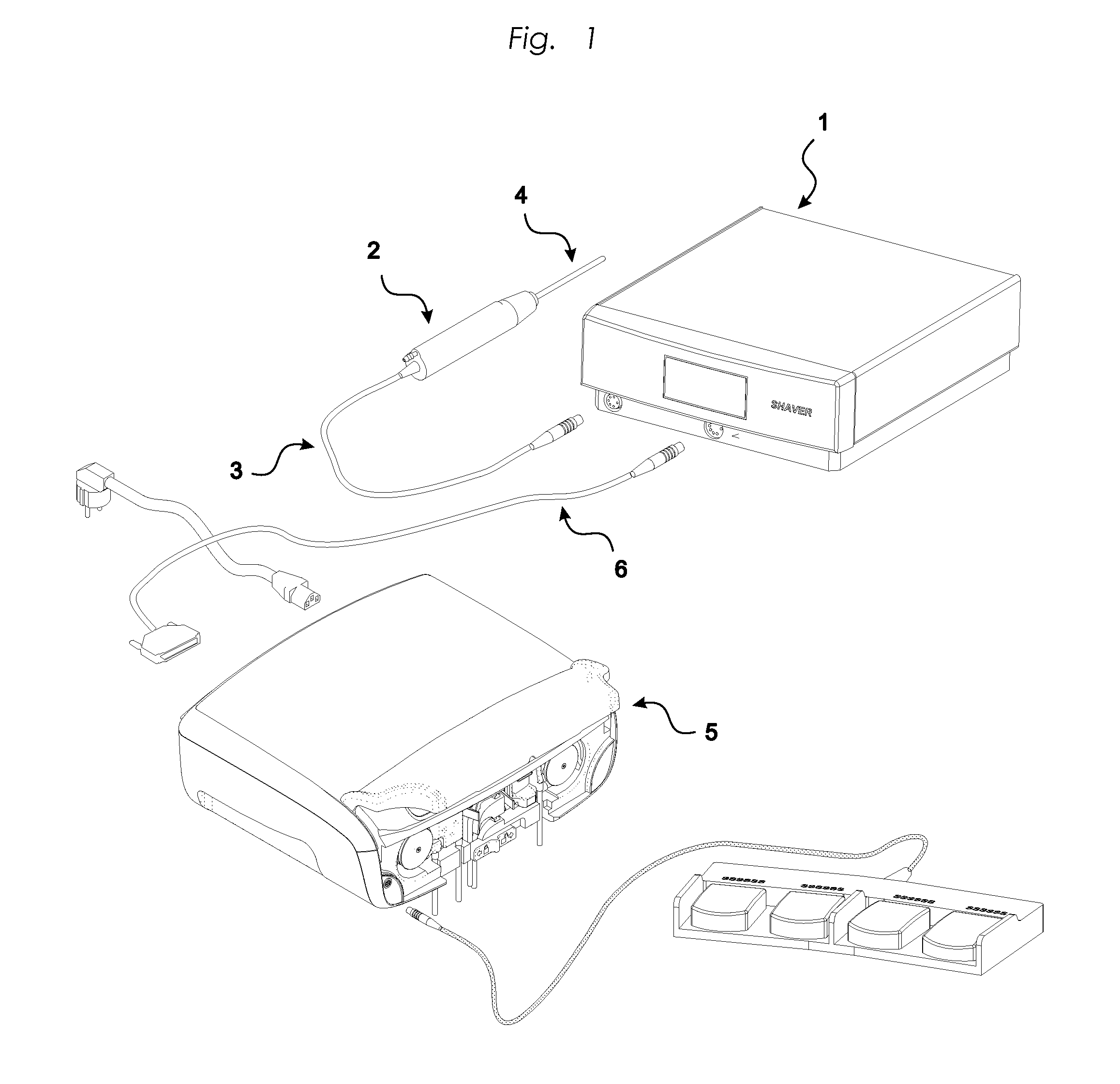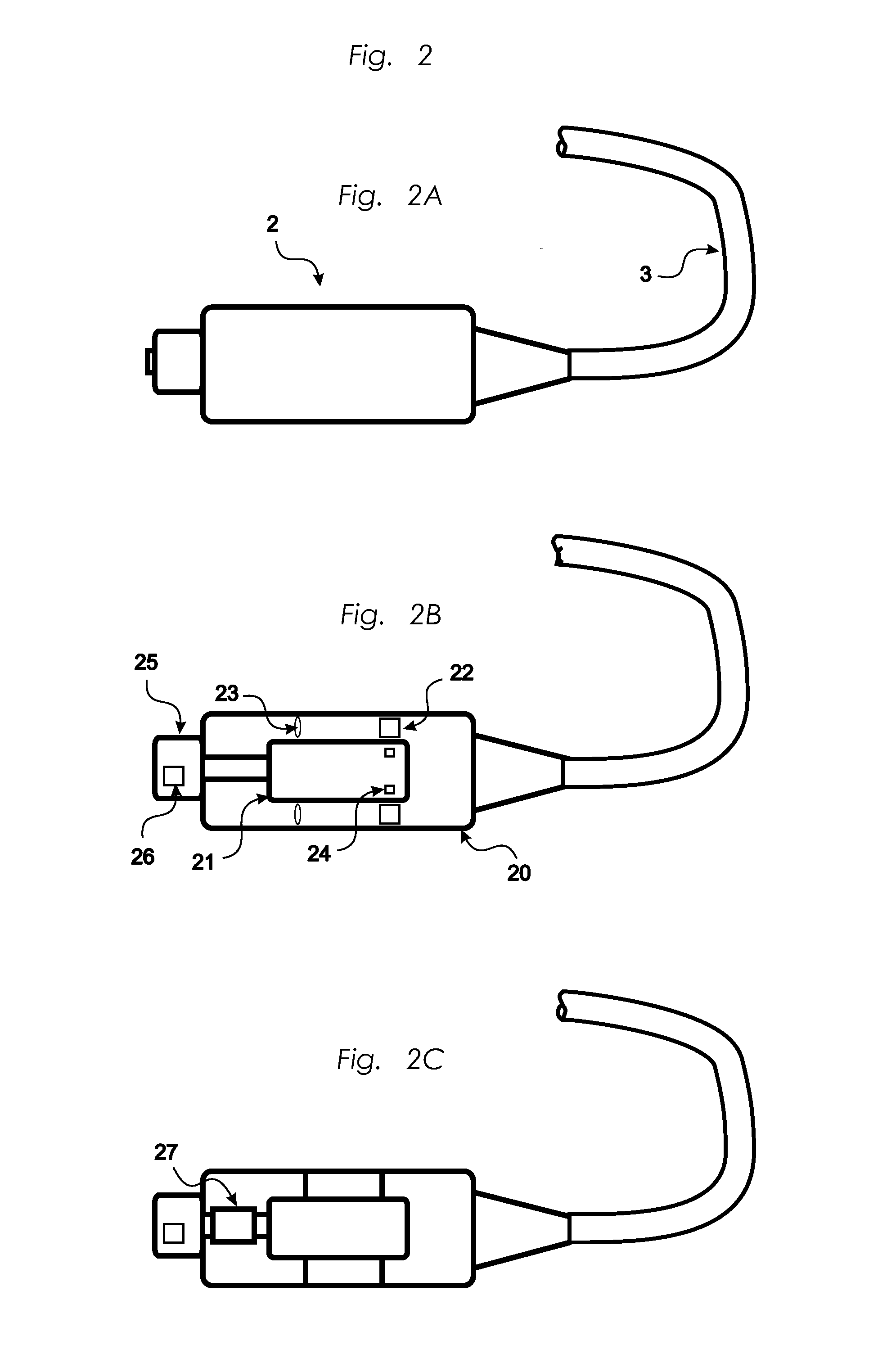Status control for electrically powered surgical tool systems
a technology of electrically powered surgical tools and status control, applied in the field of medical devices, can solve the problems of increasing biohazardous waste in the environment, high cost of medical waste disposal, and high cost of use, and achieve the effect of accurate and reliable information on efficiency and cost-effectiveness
- Summary
- Abstract
- Description
- Claims
- Application Information
AI Technical Summary
Benefits of technology
Problems solved by technology
Method used
Image
Examples
example 1
Calculation of Utilization Level Considering Different Variable Factors
[0045]The invention herein teaches an algorithm for accurately calculating the level of utilization or wear, UL. Different factors such as the sensitivity to torque, k, of each accessory, will add further accuracy to our method. The value of k differs for each type of cutting tool ((burr, aggressive burrs, meniscus cutters).
[0046]UF 1 is the first Utilization Factor, wherein:
UF 1=begin∫endk1×m×r(dt).
k1 is the sensitivity to torque
begin∫end is the integral of the time the cutting accessory starts and ends rotation
m is the torque [Nm]
r is rotation speed [rpm]
dt is the accessory running time in the specific interval
[0047]The value of k1 is directly proportional to wear. A high constant value for a specific type of cutting tool will mean rapid wear at a certain torque speed.
[0048]Each time interval, and hence each Utilization Level, UL, will consider several UF values e.g. UF1, UF2, UF3 and UF4, which are sensible or...
example 2
[0060]The general methodology described in Example 1 is hereby employed for calculating the Utilization Level when using a “meniscus cutter” during two operational procedures. This tool has a steel quality of DIN 1.4305, a material well suitable for the purpose. The specific material and product type determine the value of each parameter in the Utilization Level algorithm:
k1′=0.0001
k2=0.00001
y=3.0
k3=0.000002
k4=2
[0061]The initial run time (dt1) of the meniscus cutter is in this example 20 seconds with a moderate low average torque (m) of 0.06 Nm, representing soft tissue. Thereafter a second run (dt2) of only one second has a high torque of 5 Nm, as the tool is pressed hard against bone material. The rotation speed is 4 000 rpm.
[0062]For the first 20 second run:
UF1=0.0001×0.06×4 000×20=0.48
UF2=0.00001(×(1+0.06)3.0×4 000×20=0.95
UF3=0.000002×4 000×20=0.16
UF4=2
[0063]The Utilization Level that applies to this 20 second run is calculated as follow:
UL=0.48+0.95+0.16+2=3.59%
[0064]In the sec...
example 3
Wear Calculations Using Max Torque as the Only Variable Factor
[0067]As depicted in FIG. 5, the various levels of torque can in an alternative calculation method to the above be classified into different torque categories. In this example, if the torque is in the range 0-0.7 Nm it falls into category A, if it is from 0.7 to 2 Nm it falls into category B; and if over 2 Nm it falls into category C. A surgical procedure in which the torque is in category A during the whole process, will have an Utilization factor UFA that is the result of multiplying the time the torque falls within this category by 1.
[0068]For category B and C the Utilization Factor is obtained by multiplying the torque by 1.5 and 5, respectively. The torque falls under category A in those cases when the cutting accessory is used for cutting soft tissue; in category B for hard tissue; and in category C for cutting bone material. The time each torque category has occurred adds to the representative Utilization factor A,...
PUM
 Login to View More
Login to View More Abstract
Description
Claims
Application Information
 Login to View More
Login to View More - R&D
- Intellectual Property
- Life Sciences
- Materials
- Tech Scout
- Unparalleled Data Quality
- Higher Quality Content
- 60% Fewer Hallucinations
Browse by: Latest US Patents, China's latest patents, Technical Efficacy Thesaurus, Application Domain, Technology Topic, Popular Technical Reports.
© 2025 PatSnap. All rights reserved.Legal|Privacy policy|Modern Slavery Act Transparency Statement|Sitemap|About US| Contact US: help@patsnap.com



